What benefits does VALD Technology offer to Health and Physical Education (HPE) teachers, and how does it align with the curriculum?
Available in:
EN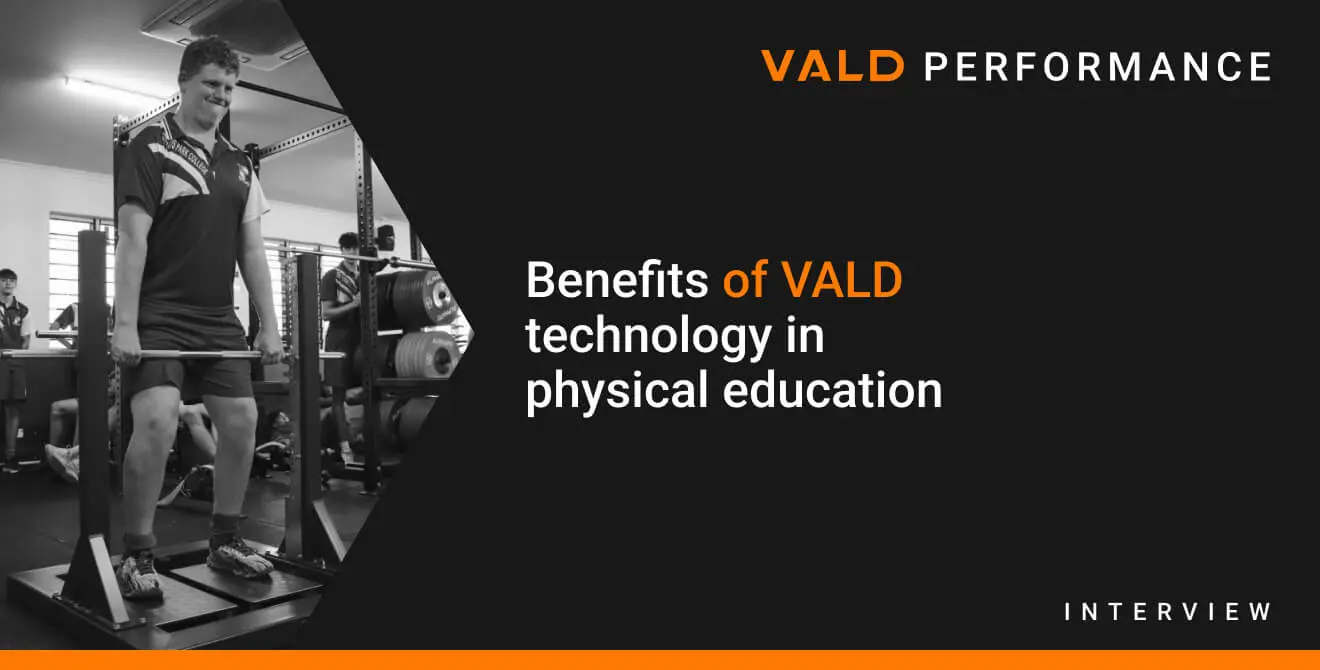
At the beginning of the 2023 year, Matthew Johnson introduced ForceDecks into his school’s curriculum. We wanted to know more so we caught up with him to find out how he implemented VALD technology, how the school was using technology and what impacts it was having on students and teachers.
Matthew is an experienced educator and coach with a passion for health and physical education, and strength and conditioning. He is currently the Faculty Leader – Physical Education and an S&C coach (Level 2 – Professional, ASCA) at Ignatius Park College (a secondary school in Australia).
What benefits does VALD technology offer to Health and Physical Education (HPE) teachers?
Within Senior Physical Education (PE) there is a significant need for students to be able to collect primary data (the first-hand data gathered by the student) for their assessment. This is particularly important for units involving biomechanics, energy systems, fitness components and training programs.
Our students use ForceDecks to gather information around force and power output, as well as asymmetries that might exist and use this data to inform the decision-making process for their assessment.
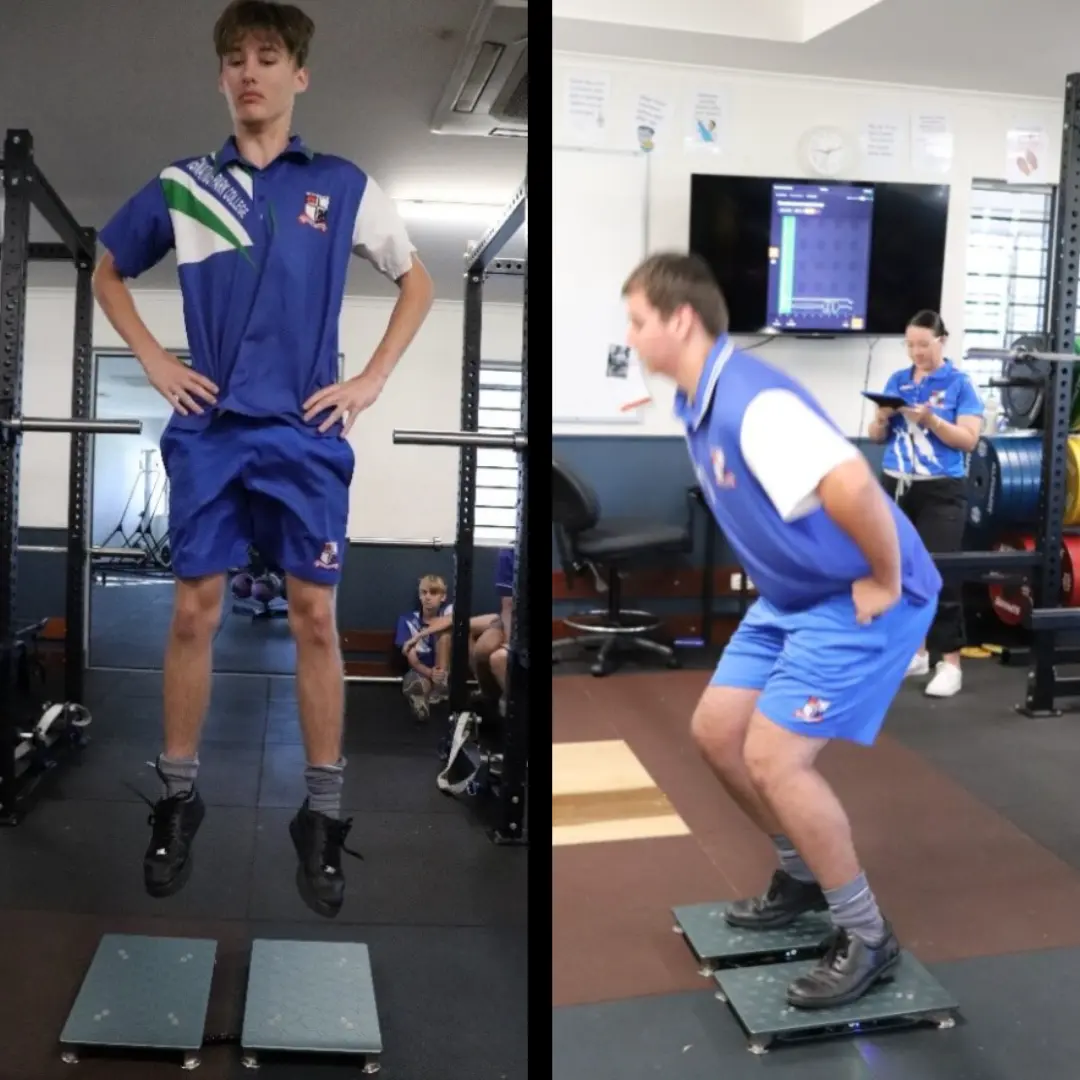
Other VALD technology such as SmartSpeed timing gates provide accurate, reliable data around student performance that can also provide invaluable primary data for students to use in their work.
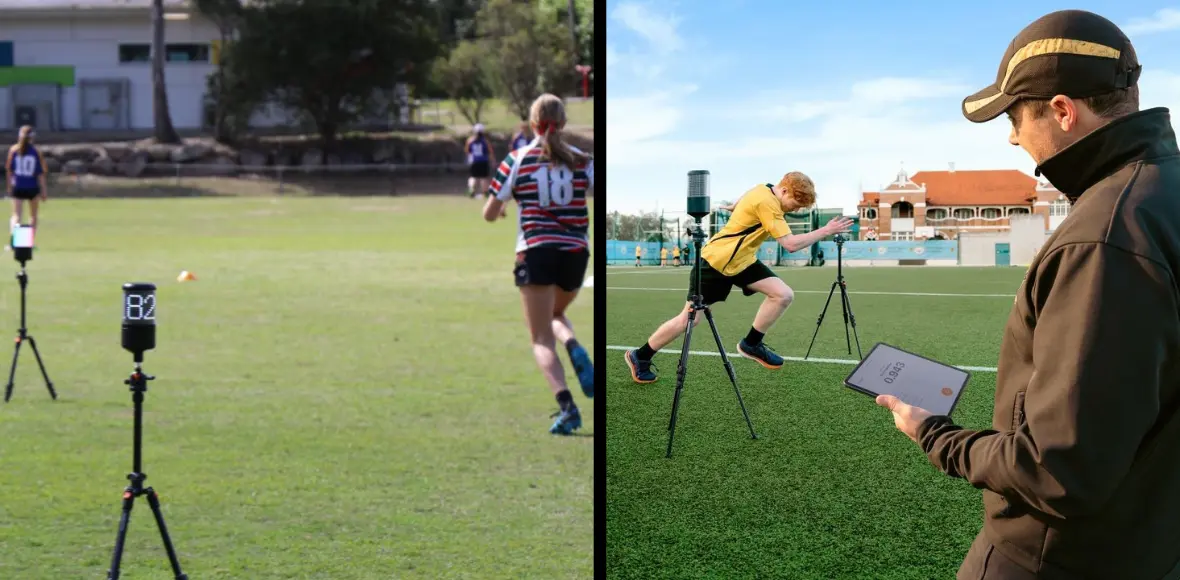
In which subjects or school activities can VALD technology be effectively employed?
In relation to other subjects, there is significant potential for VALD technology to be used by the science department. Our Physics teachers are using ForceDecks for data collection purposes in junior science classes, as well as in Year 11 and 12 classes.
Our Mathematics department have also used ForceDecks in a statistics analysis assignment for their Year 9 cohort. By having the students collect their own data adds an element of interest and relevance to them, resulting in more engagement and interest in these tasks.
By having the students collect their own data adds an element of interest and relevance to them, resulting in more engagement and interest in these tasks.
What impact has VALD had on how you collect, store and manage primary data?
Many subjects in our curriculum are now required to make use of primary data for analysis and evaluation purposes. Dissemination and interpretation of the data VALD technology collects is simple and user-friendly. Having the ability to select only metrics that are relevant to the user makes for a quick and easy process for teachers and students.
Being able to have the live data displayed on a TV or projector is ideal for teaching purposes with larger groups of students.
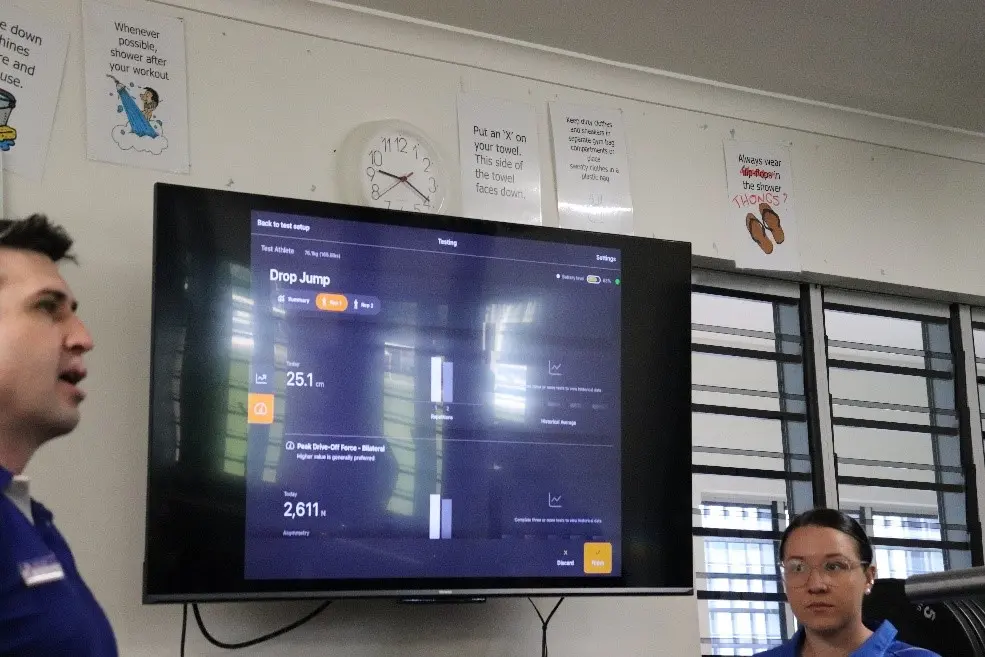
Being able to have the live data displayed on a TV or projector is ideal for teaching purposes with larger groups of students.
Furthermore, with all data uploading to VALD Hub, the end-user can quickly find and use the data collected after the session if further analysis is required.
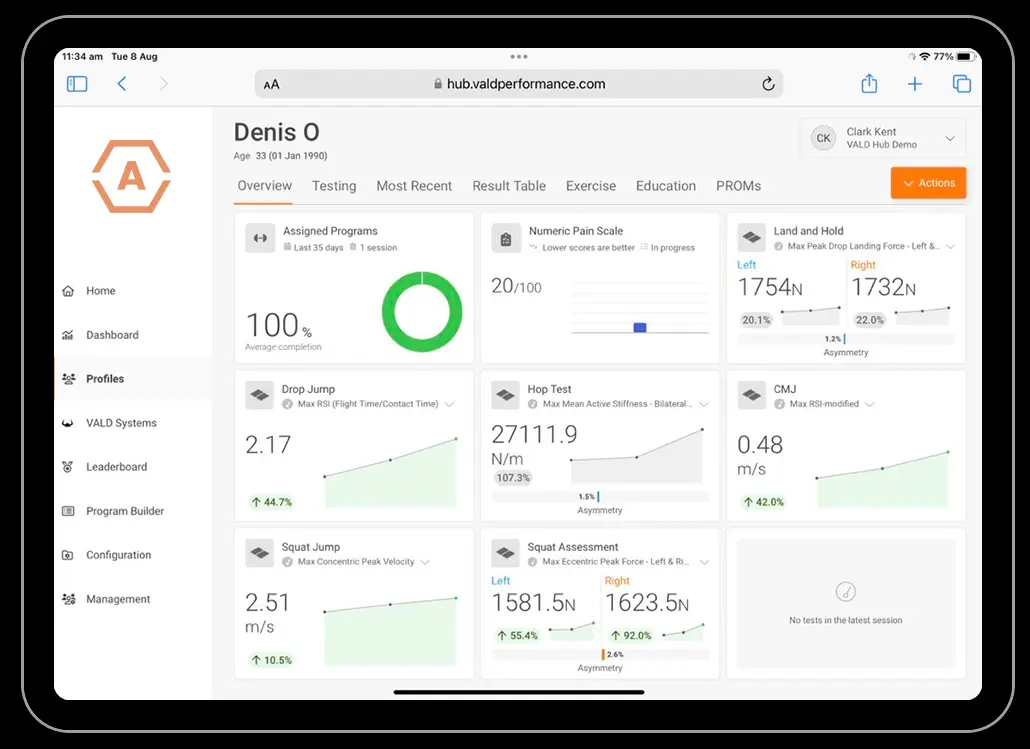
Do you use VALD technology to assist in benchmarking and comparing student performance against norms?
We are rapidly creating our own databases for various cohorts within the school. We plan to use this information to help us better understand the needs of our students and athletes. As we collect more data, we hope to be able to create athlete profiles for sport and position.
Related articles:
- Leveraging Normative Data for Talent Development in Men’s Football
- Normative Data in Youth Academy Football
It will also be useful for PE students to look at past data to see how they measure up to previous students and aid them in making predictions and evaluating their own physical performance for assessment.
We also believe that this data will be able to help the individual with return to play if they are injured. Using pre-established baseline data, we will be able to assess athletes throughout their rehab, knowing what levels of performance we need to see before they return to regular training and playing commitments.
Using pre-established baseline data, we will be able to assess athletes throughout their rehab, knowing what levels of performance we need to see before they return to regular training and playing commitments.
Related articles:
How does VALD technology contribute to the academic experience of students?
For the students that are interested in possibly pursuing a career in a related field, being exposed to technology that is widely used in industry can only be a positive. Learning about and using force plate technology – along with other forms of technology – certainly enhances the learning outcomes for our students.
Being able to get real-time data in the form of force traces, jump heights, force outputs, and a range of other metrics is beneficial to the students in helping to embed what they are learning. It speaks to the very core of what PE aims to achieve, which is learning “through”, “in” and “about” movement.
Being able to get real-time data in the form of force traces, jump heights, force outputs, and a range of other metrics is beneficial to the students in helping to embed what they are learning.
What sets VALD technology apart from other data collection methods in terms of analysis and interpretation?
A highlight feature of VALD technology is having the ability to see the force trace in real-time. This is a great teaching feature for several subjects and topics within those subjects. Additionally, having a few key metrics displayed on the screen in real time allows the teacher or coach to provide instant, meaningful feedback to the student or athlete.
having a few key metrics displayed on the screen in real time allows the teacher or coach to provide instant, meaningful feedback to the student or athlete.
The recent addition of showing the percentage increase or decrease from the previous tests is a further benefit for providing feedback to stakeholders that can allow for decisions to be made in real-time as needed.
How has VALD technology been employed in the school’s sporting programs (outside of PE)?
We use ForceDecks to monitor and test our athletes, in particular our rugby league squads. We have found that a bi-weekly rotation of CMJ and Isometric Mid-Thigh Pull (IMTP) is providing us with information about fatigue levels, as well as showing if the athletes are still making progress during the season in relation to strength and power. We’ve found the Dynamic Strength Index (DSI) score to be an invaluable metric in determining what adjustments an athlete may need to their program.
We have found that a bi-weekly rotation of CMJ and Isometric Mid-Thigh Pull (IMTP) is providing us with information about fatigue levels.
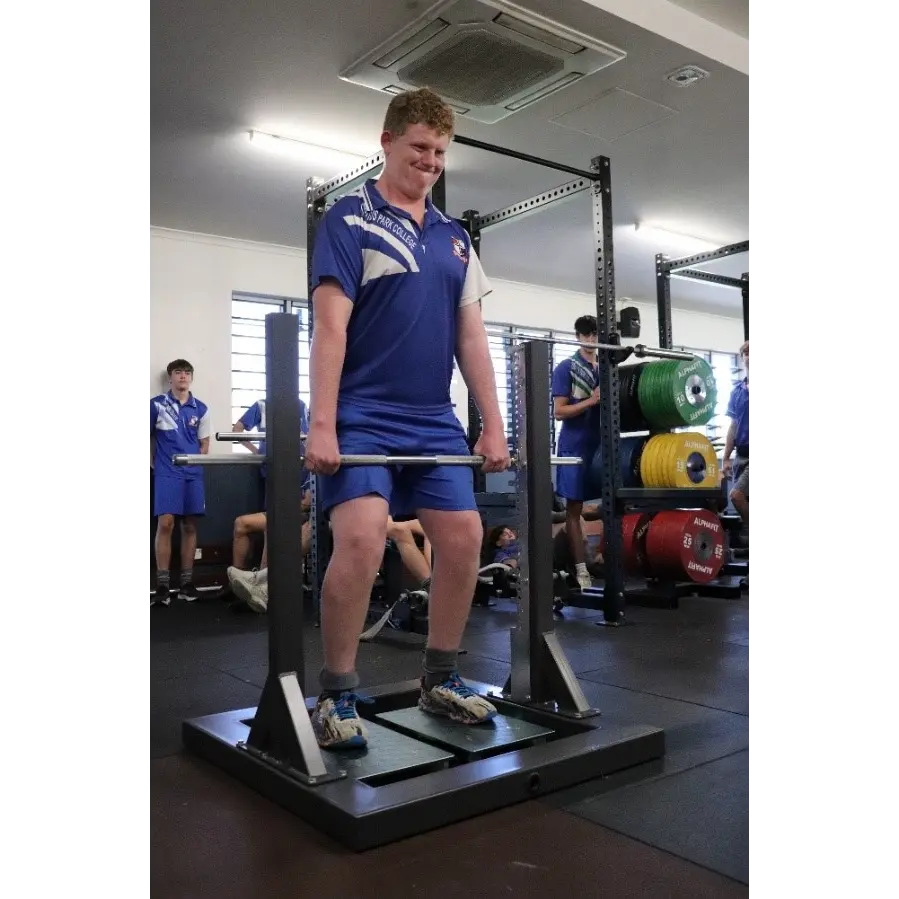
Did you face any budget constraints when implementing VALD technology?
We split the costs of ForceDecks across the PE, Sport and Science departments. Sharing the costs across departments provides an economical way of increasing the value from the technology.
Given that ForceDecks provides us with important data in multiple areas, each department is willing to contribute to that cost. As long as there is communication about when different departments need to access ForceDecks, the model works very effectively.
How did you manage to get buy-in from the various departments to implement VALD technology?
By helping other teachers understand what ForceDecks can do, what metrics they produce and discuss how this can be relevant to the specific subject. For example, students in physics can see a real-world example by comparing the difference between total power output to relative power output during a CMJ.
Has VALD technology had an impact on student attraction?
There is a definite “wow” factor for students and parents at open days and for social media promotions. Being able to show off technology can only help with enrolments.
Did it take much to learn how to use the systems?
No, the system is very easy to set-up and the iPad app for ForceDecks is straightforward and user-friendly. Anyone can learn to conduct a testing session in a few minutes.
the system is very easy to set-up and the iPad app for ForceDecks is straightforward and user-friendly. Anyone can learn to conduct a testing session in a few minutes.
Did you require much support from VALD?
For the first week or so, I contacted VALD multiple times, mostly about different metrics and the best way to capture the data. The responses were always prompt, informative and easy to understand. VALD’s Client success team was only too happy to organize video calls if needed. The customer service and continued support is excellent.
If you would like to know more about how to integrate VALD’s human measurement technology into your organization to help with the engagement of your clients, please reach out here.
With a strong background in education and coaching, Matthew has presented at a number of conferences, and authored several educational materials and research papers such as Study Buddy QCE Physical Education Units 3 & 4 Vol. 1 (2021 – Oxford University Press). He is a member of the Australian Strength and Conditioning Association and the Australian Council for Health, Physical Education and Recreation (ACHPER). He also holds a Bachelor’s in Health and Physical Education from Griffith University, along with several master’s degrees in coaching, exercise science, and sports management.
